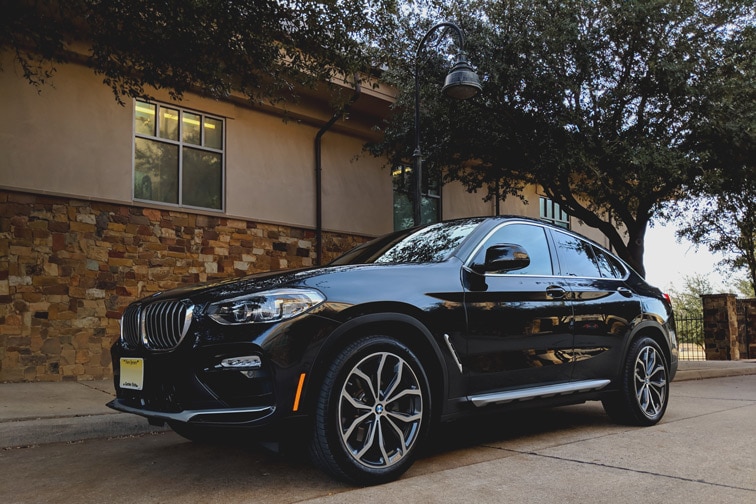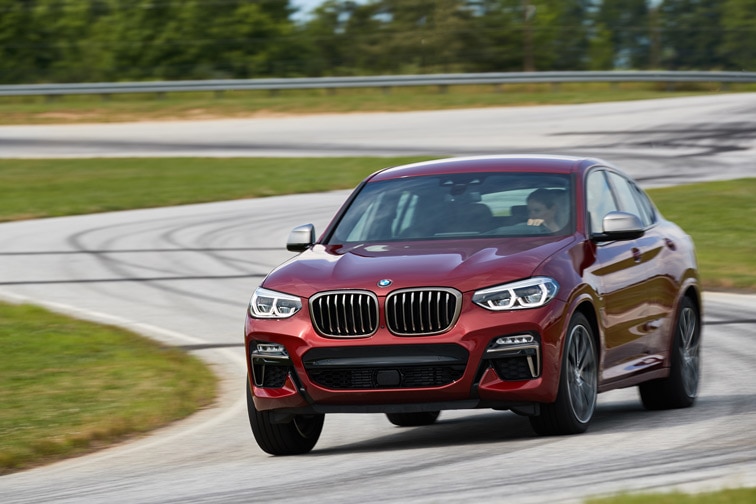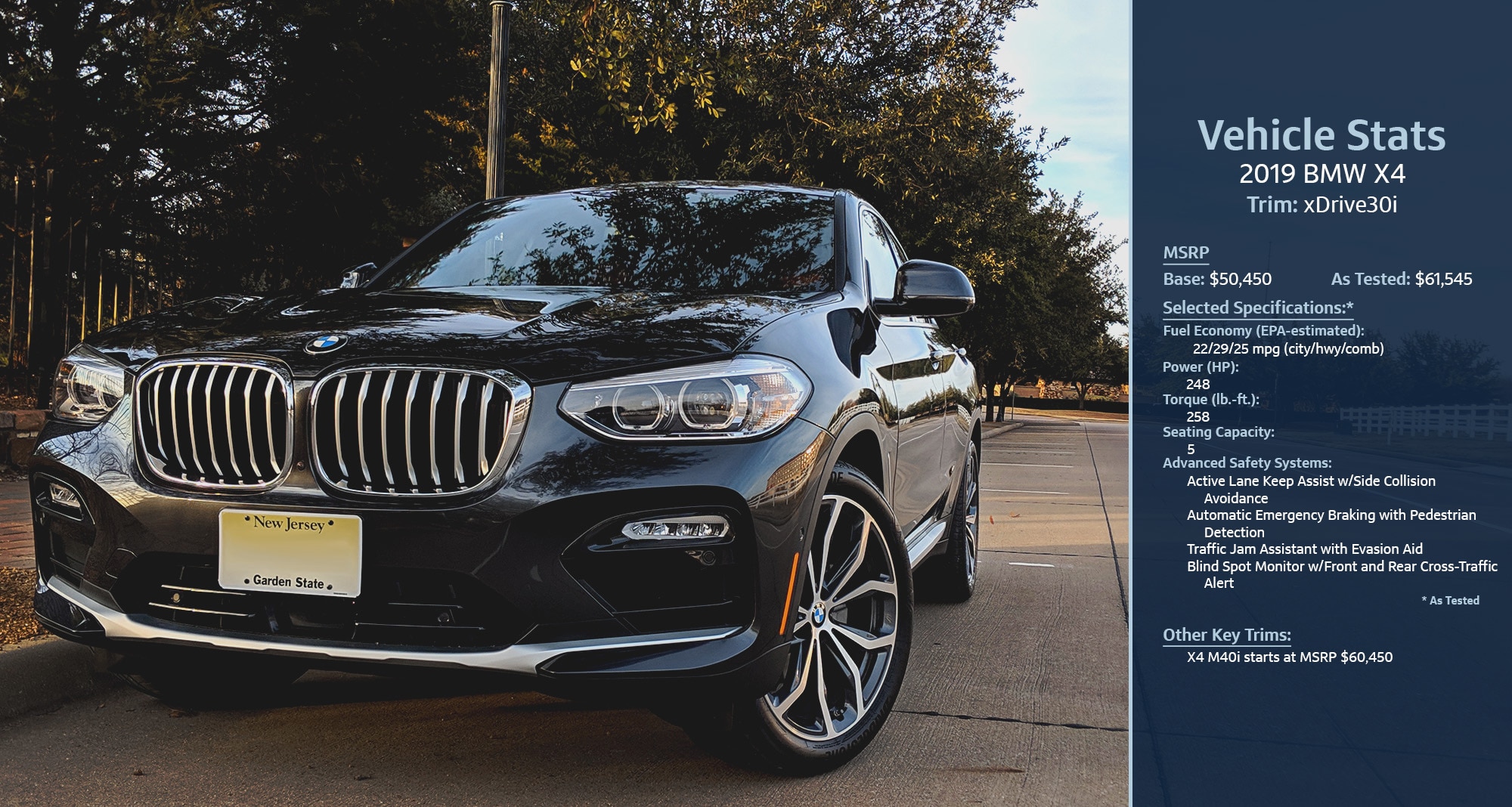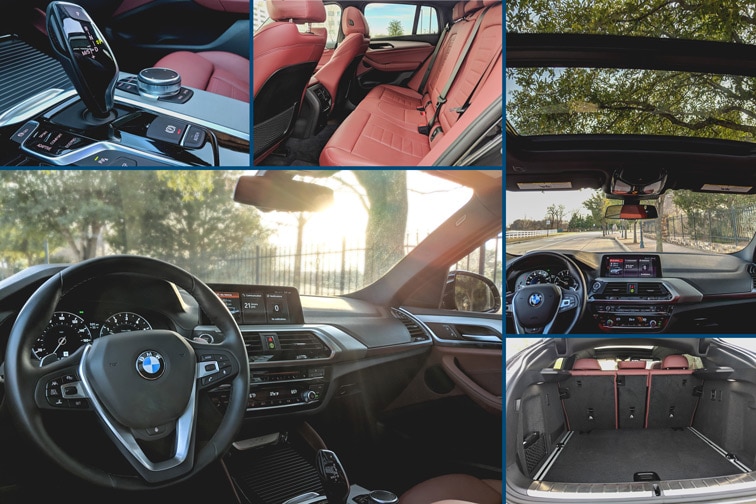2019 BMW X4: A Sport Utility...Sedan?
BMW further blurs the line between crossover and sports sedan.
 Aaron Miller/Capital One
Aaron Miller/Capital One
BMW faced a brand-defining crisis in the early 2000s. The impending rise of crossovers posed an interesting challenge for a company whose entire brand image revolves around slogans like “The Joy of Driving” and “The Ultimate Driving Machine.” The solution? BMW’s “X” lineup: the X5 and X3 gave BMW its first foothold in the crossover waters. By 2018, the two models held down the top two sales spots in BMW’s lineup.
Of course, after almost single-handedly popularizing sports sedans between the late 1960s and early 1980s, simply selling crossovers was never going to be enough for BMW. Enter the X6 and X4, which blended crossovers and sedans into a single package for anyone torn between the two styles.
Flash forward to today, and the 2019 BMW X4 is just entering its second generation. BMW’s engineers tweaked the chassis, finagled the shape, and refined it right alongside the X3, on which it’s based. Both the X4 and X3 borrow heavily from BMW’s “Cluster Architecture” platform, which also underpins everything from the venerable 3 Series to the flagship 7 Series, and even the Toyota Supra.
Put simply, the X4’s success isn’t a matter of the amenities it has or the tech it offers. With a base MSRP just north of $50,000, those should both be more or less given. Instead, the area in which BMW’s most sedan-like crossover needs to differentiate itself is how it feels while driving.
To that end, BMW tossed us the keys to a shiny new X4 xDrive30i for a week. It’s the less powerful of two variants of X4 (the other being the X4 M40i), although a much more performance-minded X4 M (drawing heavily from the M3) is officially slated for production later this year.
 BMW
BMW
The new X4 drives like a BMW sports sedan should
While the laws of physics dictate something weighing 4,146 lbs (4,323 lbs for the M40i) won’t be as nimble as the 3-Series, the X4 acquits itself with all the poise and cornering grace one could realistically expect out of a vehicle with this sort of ride height and heft. It’s a well-balanced machine, and the “xDrive” all-wheel drive system compliments, rather than interferes with the X4’s sporty nature.
In an age where even minivans put out over 270 hp, the power figures (248 hp and 252 lb-ft of torque) might not jump off the page, but in the real world, the turbocharged four-cylinder doesn’t lack for oomph. For those that demand more, however, the M40i’s straight six puts out 355 hp and 365 lb-ft.
In a performance environment, passengers get nervous long before the X4 does. Cornering is consistent and confidence-inspiring, without the kind of mid-bump oscillation that frequently accompanies the crossover competition. Deeply-bucketed front seats provide plenty of lateral support in the kidney area during hard turns, while the brakes are more than capable of slowing down the X4’s extra mass.
The ride is smooth, and our test vehicle came with BMW’s adaptive suspension, which alternates between “Comfort” and “Sport” modes at the touch of a button. As with other BMWs, the setting you choose is a matter of personal preference. We left it in sport almost the entire time.
If driving characteristics matter more than anything else, BMW has done right by the X4. Engineers gave it stiffer suspension than the X3, and the result is an engaging experience that rivals many a sports sedan. In the words of one of our staff members, it’s “a cut above” when compared to the way some other crossovers drive.
 Aaron Miller
Aaron Miller
Visually, it’s in-between a crossover and a hatchback
If a crossover is a blend of SUV and sedan, the X4 further refines the difference. BMW will tell you it’s a “Sports Activity Coupe”, though no one will confuse it for an off-road vehicle. Perhaps best described as a five-door hatchback with extra ride-height, the X4 is nearly identical to the X3 from the front, while the rear is much more closely aligned to the 3 Series Gran Turismo hatchback.
That might sound like an odd pairing on paper, but in practice, the proportions come together in a way that never quite worked on the
Of course, part of what makes buyers pay over $50,000 for a BMW is the designers’ attention to detail, and there’s plenty of detail to go around. BMW’s trademark kidney grilles and rear window trim uptick (called a Hoffmesiter kink) are obvious starting points. What makes more of a difference is the array of hidden details that most will only ever notice after living with the X4. Finishing touches like puddle lights that match the pattern of the interior dome, a stamped “X4” on structural panels that are only visible with the door open, and a rear hatch latch release hidden beneath a flip-up roundel badge help distinguish the X4 as a premium offering.
For those wanting a sportier option, the available M Sport package (MSRP $3,000) borrows many of the X4 M40i’s visual distinctions. Highlights include larger lower grille openings, a revised rear bumper, and black window trim instead of chrome.
 Aaron Miller
Aaron Miller
It’s almost literally an elevated sedan inside
From the driver’s seat, the crossover-like ride height is readily apparent. The higher vantage point affords better forward views than its 3 Series cousins, which is virtually the only clue from the inside that you’re in what is technically, according to the US government, a “Small Sport Utility Vehicle.” Think of it as a sport utility sedan.
Even the cargo area—once considered a main reason so many buyers migrate toward crossovers in the first place—is sedan-like. Fold the rear seats down, and the X4 offers 50.5 cu ft of cargo space. Put them back up, and that number is 18.5 cu ft. For comparison’s sake, the more traditional SUV shape of the otherwise almost identical X3 enables up to 62.7 and 28.7 cu ft, respectively.
 Aaron Miller
Aaron Miller
Tech at your fingertips, but not in your face
Technology in the X4 is perhaps its most understated attribute. The gauge cluster appears analog at first glance, but it’s an elegant mix of tradition and tech that presents the clarity of analog elements with the functionality of digital displays. As a compliment to the gauges, the head-up display can show everything from speed and RPM to step-by-step navigation instructions that reduce the need to take your eyes off the road.
The 10.25-in touchscreen in the center console provides a clean interface and is well-suited to BMW’s surround cameras, which not only mimic a third-person view of the vehicle when parking, but also give a visual representation of whether there’s anything in the way of the doors.
Load up on the tech packages, and the X4 comes with a long roster of advanced safety and convenience features. Automatic emergency braking with pedestrian detection, lane keep assist and blind spot warnings are all available, and BMW’s stop and go traffic-ready cruise control takes much of the footwork out of the worst part of a commute.
For 2019, BMW’s “gesture control” trickles down to the X4 from the 5-Series. In theory, it’s a cool way to adjust things like audio volume by waving your hand in a certain way. In practice, it takes quite a bit of getting used to, and we wound up just using the controls on the steering wheel and dashboard, to avoid the risk of cranking the sound to ear-bludgeoning levels.
Conclusion: BMW applied its sports sedan knowledge, and it shows
The X4, along with fellow Europeans like the Porsche Macan, Mercedes-Benz GLC300 Coupe and Alfa Romeo Stelvio, is part of a somewhat-new wave of crossover SUVs that happily trade some of the “utility” in sport utility for a little more of the “sports” in sports sedan.
Body shape and cargo room aside, the difference between the more traditional X3 and the X4 boils down to intent. The X3 is a comfortable and capable vehicle that can deftly handle weekend baseball and soccer duties. The X4, meanwhile, exists for anyone that wants a crossover but who, like BMW itself, still hold sports sedans near to their heart.
With the sales success of the X3 and X5, BMW could’ve easily allowed the crossover craze to redefine the brand, but it didn’t. Its engineers clearly applied their sports sedan knowledge to the second generation 2019 X4, and the result is an engaging drive that respects BMW’s heritage while committing to the realities of today.
Written by humans.
Edited by humans.
 Aaron Miller
Aaron MillerAs a veteran automotive journalist, I have been fortunate enough to drive some of the most desirable cars on the planet and get to know some of the most important people in the industry. Before joining Capital One, I served as the Cars Editor for a major national website, and covered industry news and analysis for well-known automotive-specific sites. I also wrote feature articles and reviews for niche enthusiast websites. I’ve been obsessed with cars since—literally—before I can remember, with my collection of die-cast and slot cars taking center stage during my formative years. Simply put, for me, working isn’t really “work.”
Related articles
View more related articles